Emerald Skulls and the Dice Game of a Swindler’s Chest

Roll dice to collect more gears in a simple push-your-luck experience in the shadows of Kulbak Prison with Emerald Skulls.
Still ready to explore more content in the Swindler’s Chest, it was about time to move onto the dice game, Emerald Skulls. This seemed a lot more suited to a larger group with chaotic rolling and betting… Yet I was still intrigued by the included solo mode! Time to toss some dice, fill in some skulls, and make sure I had the biggest collection of gears to claim victory!
Game Overview
Game Name: Emerald Skulls
Publication Year: 2025
Designer: Steven Dast
Artist: Diego Sá
Publisher: Thunderworks Games
Solo Mode: Included in the Base Game
This shared box includes some common components, but this game focuses on rolling dice to fill in different levels of a skull. Figuring out when to stop or when to risk going further is the main focus as the dice rolls keep going! Gears provide the source of victory points to determine a winner.
First Play
June 5, 2025
Complexity
1
Latest Play
June 5, 2025
Expansions
0
Setup Time
Almost None
Lifetime Plays
2
Play Time
20 Minutes
High Score
48
Game Area
24" x 20"
Low Score
39
A Shared Game Box
Since I accidentally skipped over Goblin Vaults when it was first announced, I was intrigued by this shared collection!
With a common supply of gears, akin to currency, this felt like it cut down on the total number of components.
However, in order to make these sorts of boxes work, all of the included games need to be roughly similar in terms of the enjoyment. And as I’ll talk about… Disparity! Disparity!
I ended up really liking one of the games, and not liking the other one at all, at least for solo. Which makes these types of boxes a little risky, and I’ll likely be more cautious.
Back to the Vaults
I know, I know: Wrong game. Ha ha! I wasn’t quite done with Goblin Vaults and gave it a few more plays so I could be sure I had a good idea of how it compared. Research…
And fun! I tried out some new goals, along with different card suits. This is all about bidding and placing cards in a vault to collect treasure. Lots of thoughtful but quick turns!
Some goal combinations will lead to higher scores, although I didn’t feel like I destroyed the solo opponent.
There were plenty of neat turns, and I finally started to see the strategic plays possible with switching the warden card.
My Treasure Chambers
A few cards I wanted slipped out of my grasp, yet I was able to recover in time! Powerful warden actions were rare, but allowed me to move cards or try to find better ones to play.
There wasn’t too much going on, but I loved the way the goals drove my decisions. Keeping the solo opponent from picking up valuable cards was also a key decision point.
Just so much fun! Play time moved quickly and I felt like I had accomplished something neat in the end.
Only one more thing left to do: Partially clean up! It was then time to learn about the other included game. And dice!
Betting on the Dice
This is a game all about rolling dice, taking chances, and making real-time bets as the action unfolds. But not in the solo mode, which is more about strategic dice rolling.
I struggled with the rules, despite this being such a simple game. It took me awhile to figure out what I could do on my turn and how the dice were placed one level at a time.
Interestingly, the solo player never has the chance to bet: All that happens is rolling dice and knowing when to stop.
Maybe I should have caught on with the fact that the game can go up to 8 players… That’s hard to turn into a solo game.
The Importance of Meaningful Decisions
I think the biggest lesson from this play experience boiled down to understanding the weight of my choices. Building a vault and making careful decisions was never left to chance: I took risks with my card bids, but could always find ways to shift what I was doing when I didn’t get the card I wanted. My scores suffered a bit, yet I was in control of my choices.
Dice are always going to introduce more randomness and less meaning in certain ways, but there are lots of solo games where rolling the dice still leads to interesting turns. In this case, the dice placement felt obvious. Pushing my luck only felt like it was interesting when the solo opponent’s bets didn’t encourage me to stop early. And even then… It wasn’t great.
Maybe I wanted more than a lightweight push-your-luck dice game was going to offer. Could simply be me! But I have no desire to play this solo again. Maybe that will give it a chance to be enjoyed multiplayer, where it could shine.
Understanding Outs
Dice are first chosen, with more coming at a cost. The solo opponent then flips over a card to determine its bets, and then rolling commences with a lot of new terminology.
Theoretically, it made sense how these different kinds of outs worked. I even understood how some of them were nested together. But in practice, it was a little clunky.
I had to try my best to score the biggest payouts, but that meant taking a lot of risks. Which I could sort of mitigate…
That mostly meant I had to stock up on re-roll cubes, then use them later on to roll the dice. It felt very linear.
Place Your Bets!
The solo mode includes a pair of solo opponents that work together. Vrax and Kur the Red are a lot more thematic in the rulebook. During gameplay, it’s just flipping cards.
Each one shows the bets based on the number of dice rolled. But with only 8 different bets available, this felt limited.
Gameplay sort of mirrored a multiplayer game with trying to score while taking away scoring opportunities, but I didn’t really feel that engaged. And I could never bet.
With only 10 rounds, it also felt very anti-climactic when all of my rolling led to almost no collected gears on either side.
Simple Types of Bets
Large betting markers made it easy to see which bets the solo opponent was using during the round. This made me make different choices at times, but it was strange.
For instance, me blocking the solo opponent often resulted in a paltry amount of gears for myself, and less for Vrax and Kur the Red. Those rounds felt rather wasted and boring.
Granted, there were some exciting rounds with the dice as I moved up the skull levels and got closer to a jackpot!
It all felt like it dragged on for awhile, though, and I wasn’t doing much beyond making simple dice rolls and choices.
Earning a Full Skull
During each play, I managed to pull off an exciting event when I got a double out with a full skull! In other words, I placed the dice in this pattern to trigger the jackpot.
That granted me 30 gears, and seemed to be the main way to actually win. But a full skull was hard to achieve, and I felt like it was all about relying on luck for it to happen.
Some of my decisions felt meaningful, yet I was constantly left feeling like I wasn’t playing a game… Just rolling dice.
I can see the appeal of the chaos and laughter over rolling dice and busting in a group, but the solo mode isn’t for me.
Session Overview
Play Number: 1 & 2
Accessory: Swindler’s Chest
Solo Mode: Included in the Base Game
Outcome: 48-72, 39-53 (2 Losses)
The solo opponent cards may have been balanced with random bets, but I never felt like I was doing anything to really pull off clever blocking moves. It was more like… Literally stopping my rolls early by chickening out. There wasn’t an opportunity for me to feel like I did anything remotely meaningful, and even filling in the skull didn’t feel like I did anything amazing. Sadly, not one I’ll enjoy solo!
%
1 Play
Affordability
Price & Value
3
Functionality
Challenges & Mechanics
6
Originality
Design & Theme
4
Quality
Components & Rules
8
Reusability
Achievement & Enjoyment
3
Variability
Distinctness & Randomness
4
+ Pros (Positives)
- Setup is very quick with just a few cards and components to set out before being able to jump into gameplay.
- The solo opponent cards are very clear and easy to understand in terms of where to place the betting markers.
- A few interesting decisions can be found during each play when choosing which dice to place and when to stop.
- Re-roll cubes are a valuable commodity and are very important to collect for later rounds and better payouts.
- Understanding the probabilities and payouts before rolling is very easy with the clearly printed information.
- Choosing when to spend gears to roll more dice can be neat, especially when thinking about also using re-roll cubes.
– Cons (Negatives)
- Not a lot of meaningful decisions are present in the solo mode, which never allows the solo player to place bets.
- Rolling dice over and over again without a lot of clever choices gets repetitive very quickly, and gameplay can drag on.
- Many rounds often encourage poor choices with very low payouts, rather than rewarding taking even greater risks.
- Using a shared supply of gears can get frustrating when making change and ensuring there are always 120 total gears.
Victory Conditions
Score the Most Points
- Overall Goal Progress 0%
Goals and Milestones
Win at least 1 game.
Continue the Conversation
What do you think of Emerald Skulls? Are there other solo dice games you enjoy playing? I had hoped that this combined box would lead to me enjoying both games, yet I suppose only one won me out. The good news is that I had a wonderful time with Goblin Vaults, and may not have discovered it without this game! I’ll always find a positive story. Ha ha!
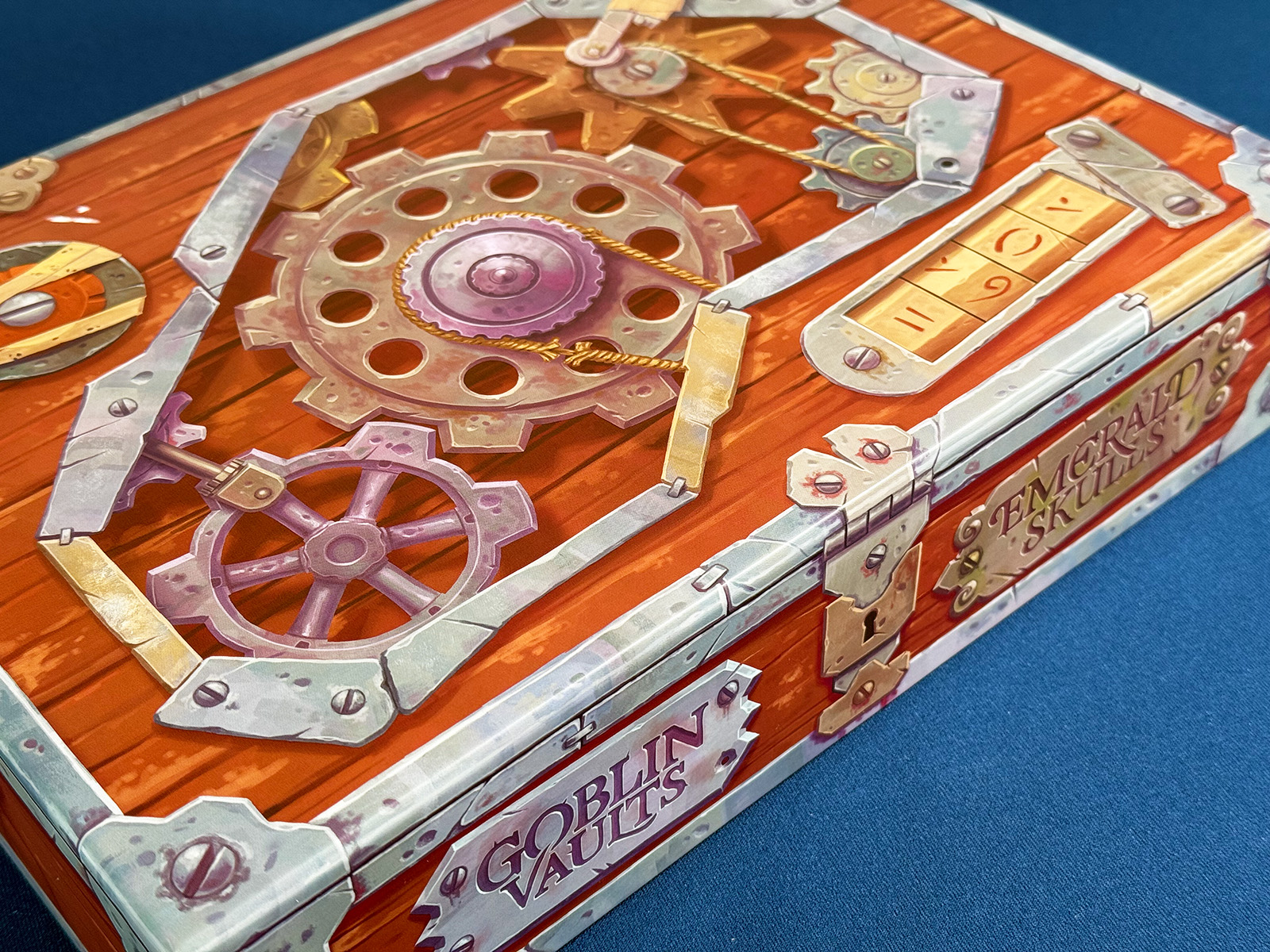
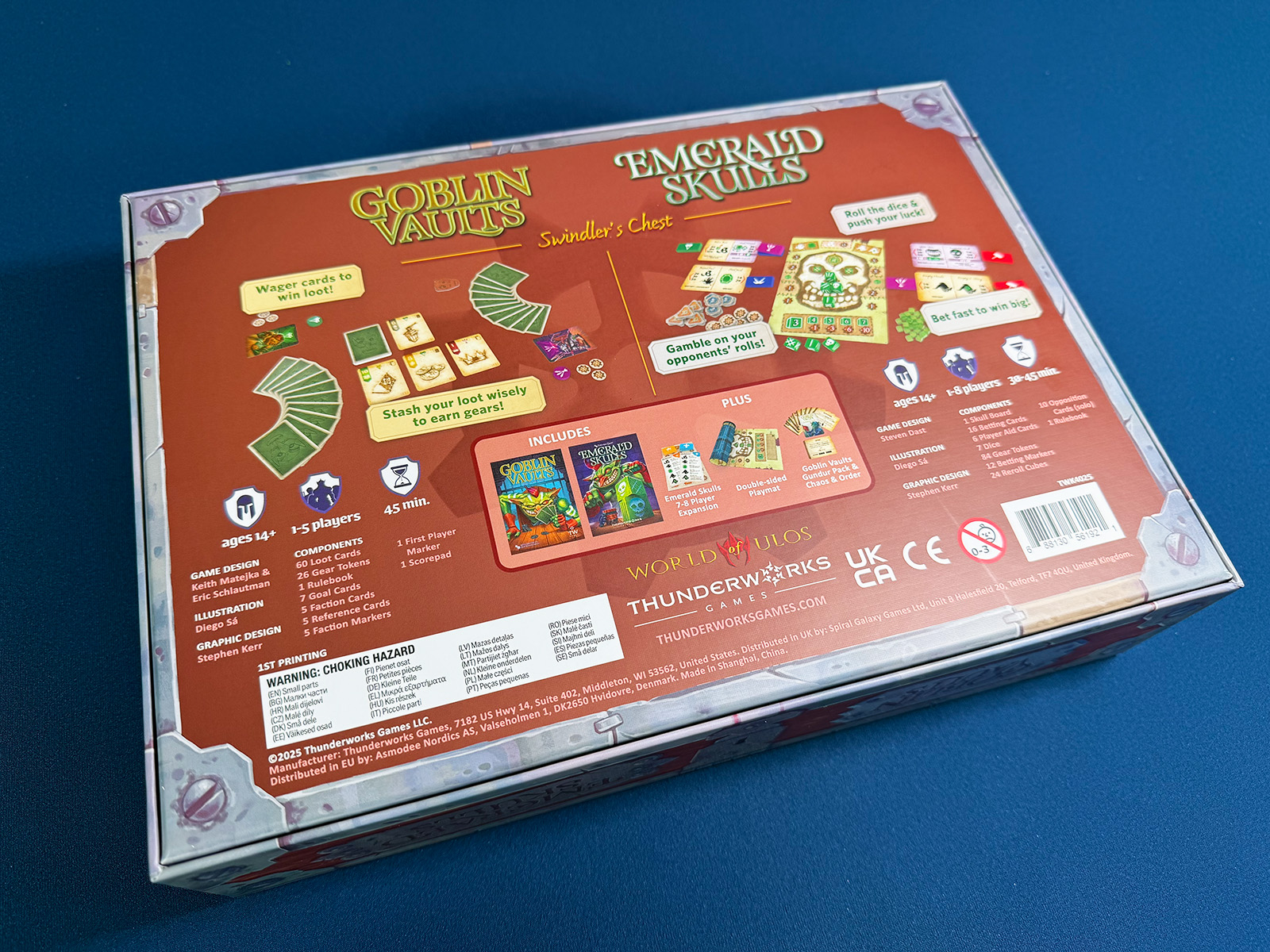
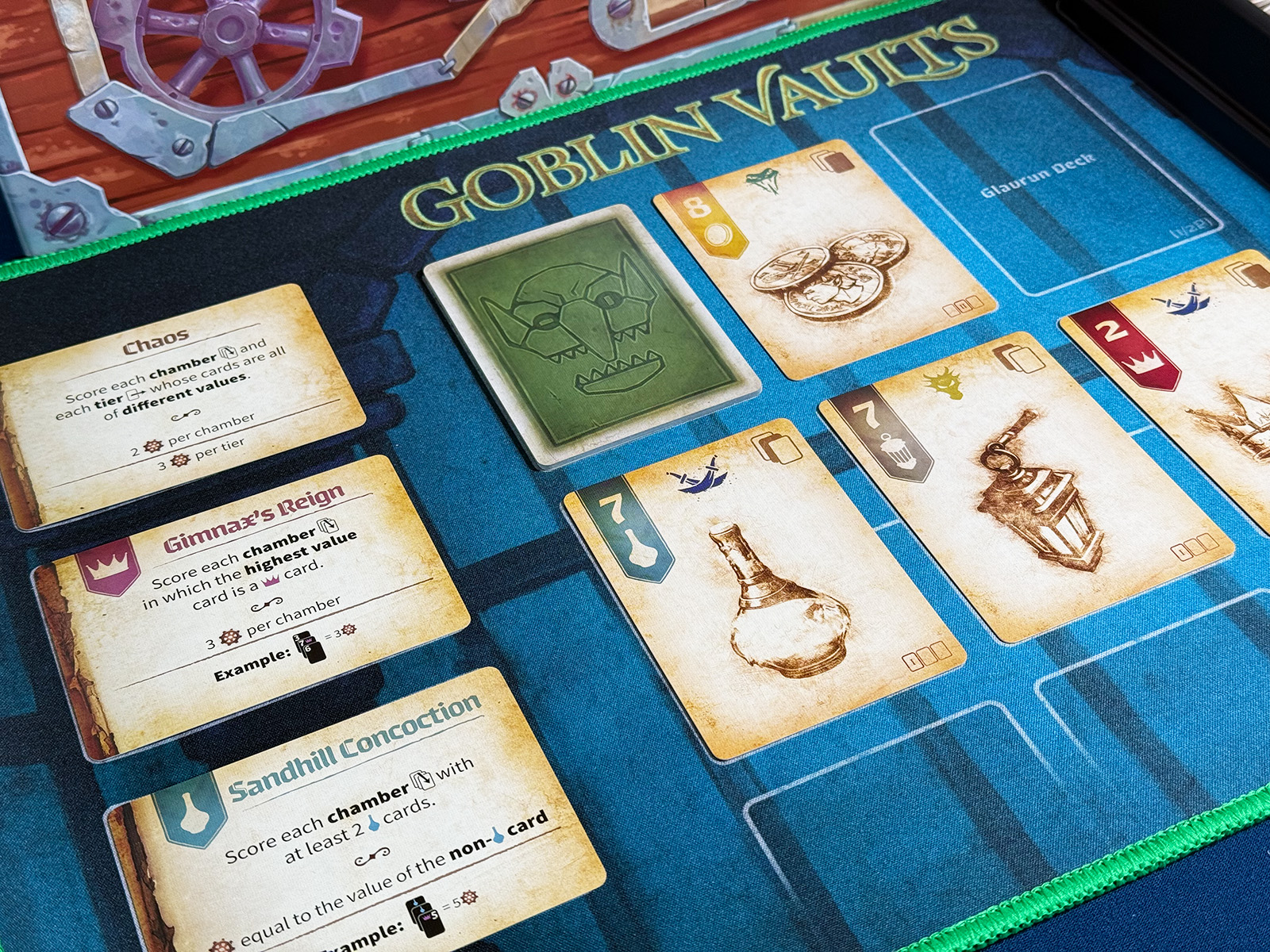
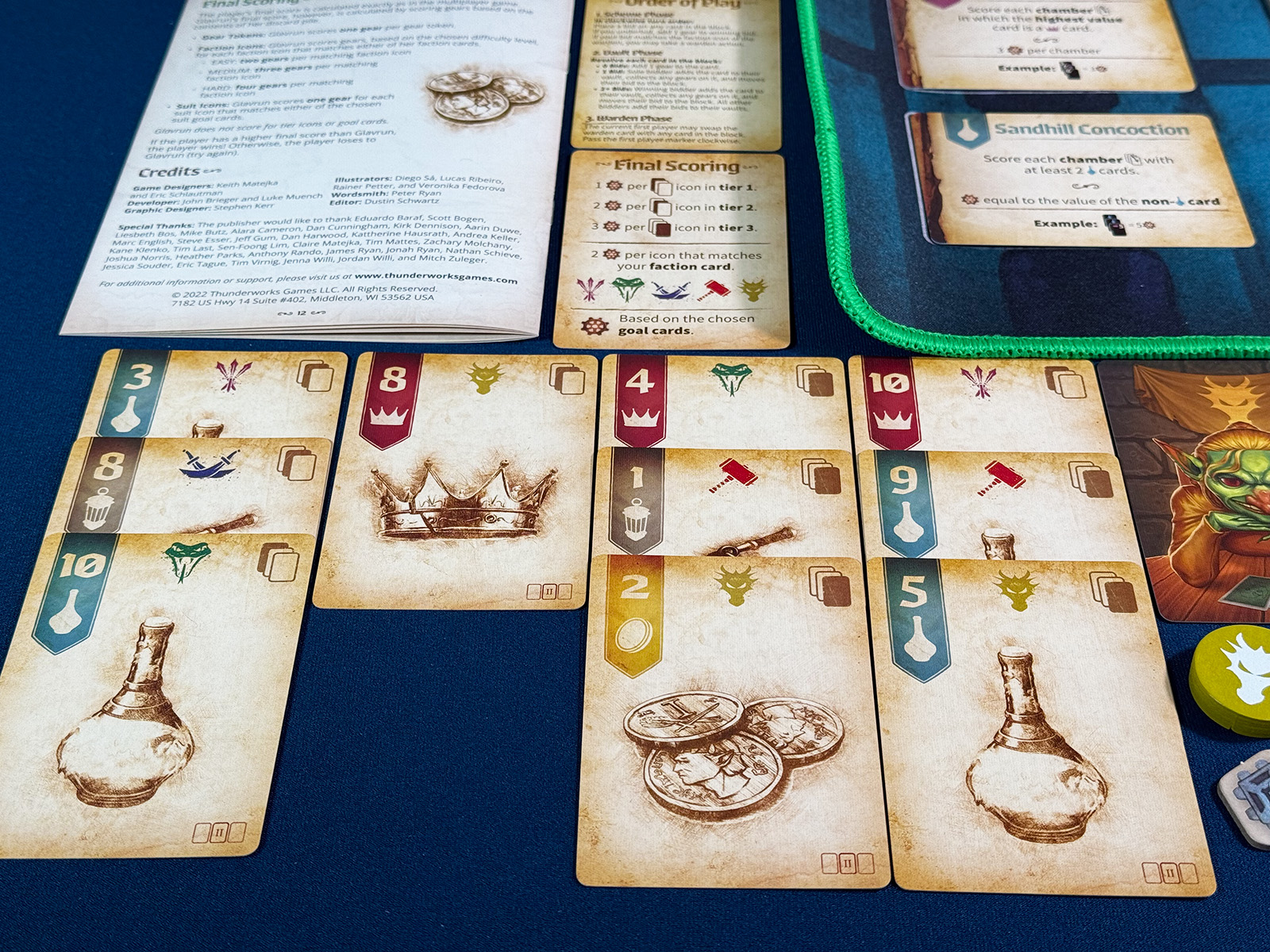
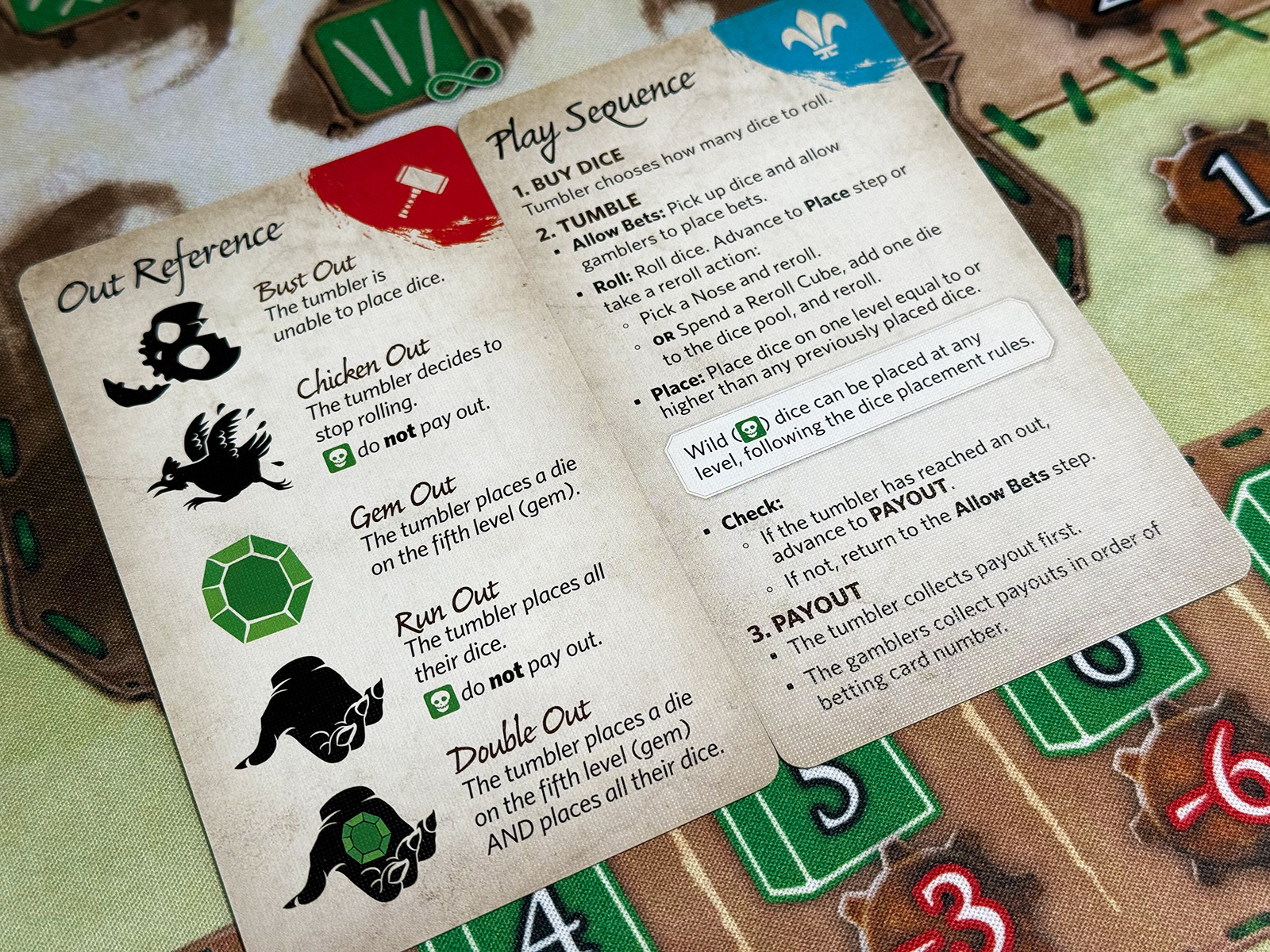
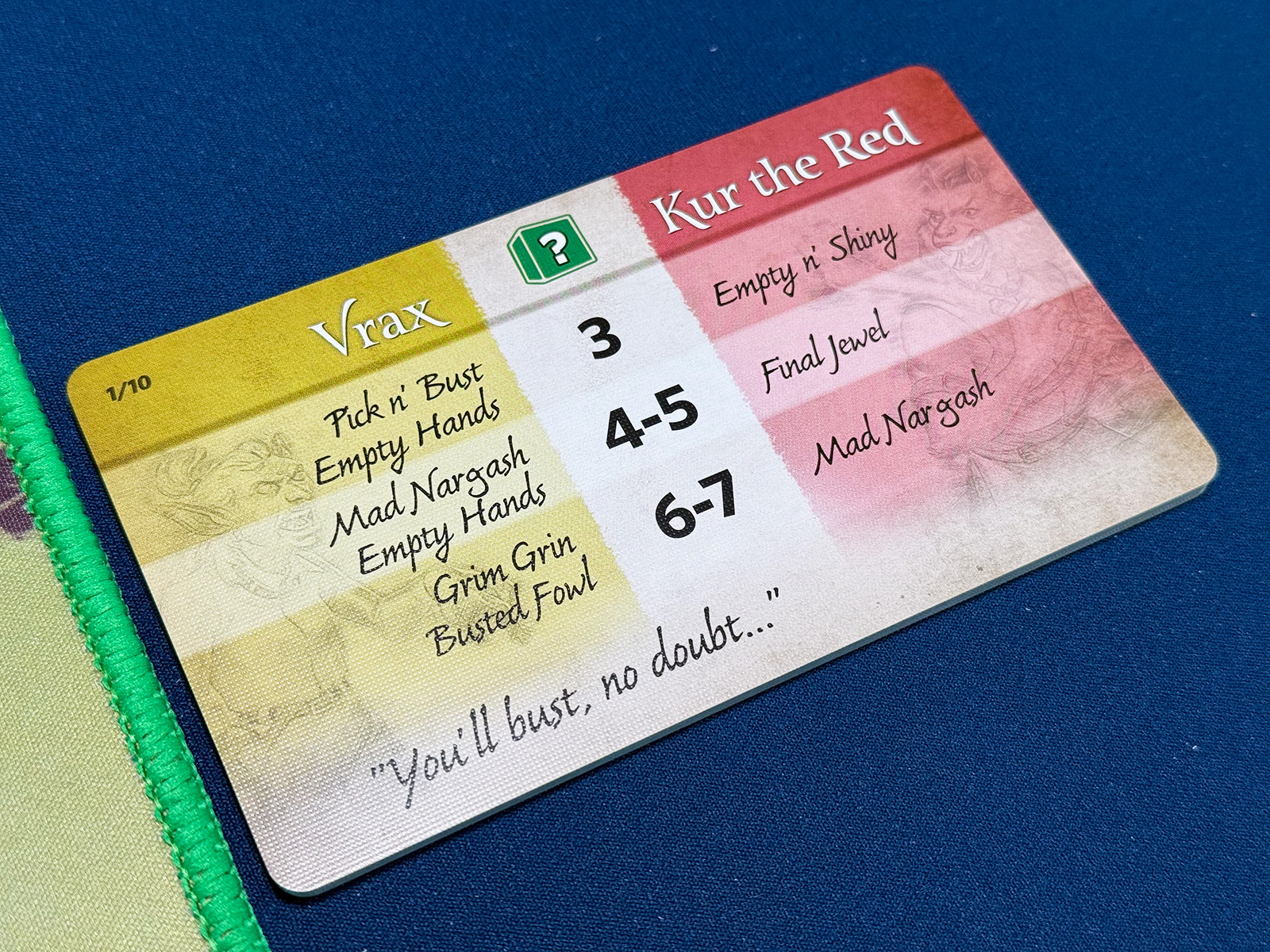
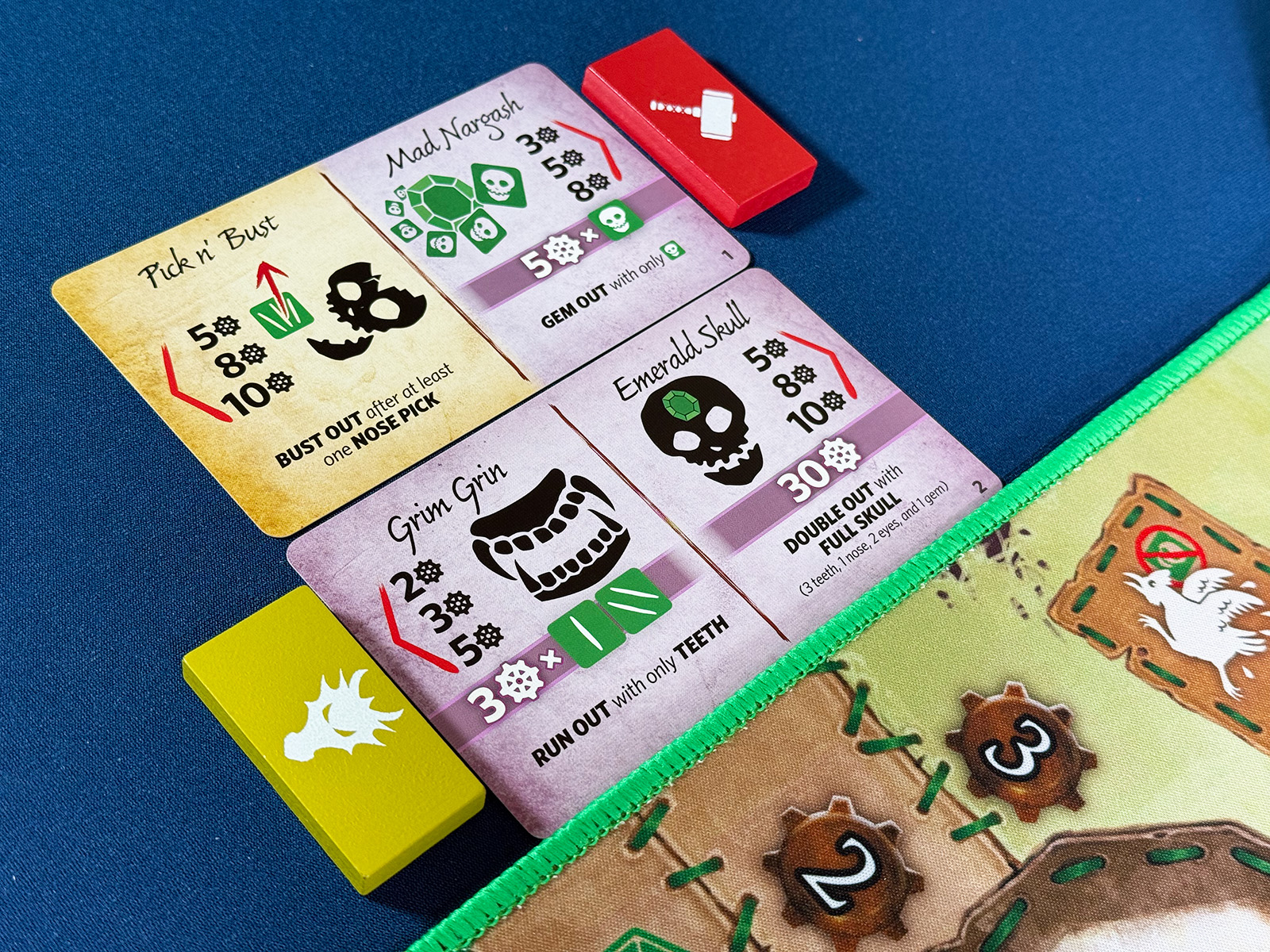
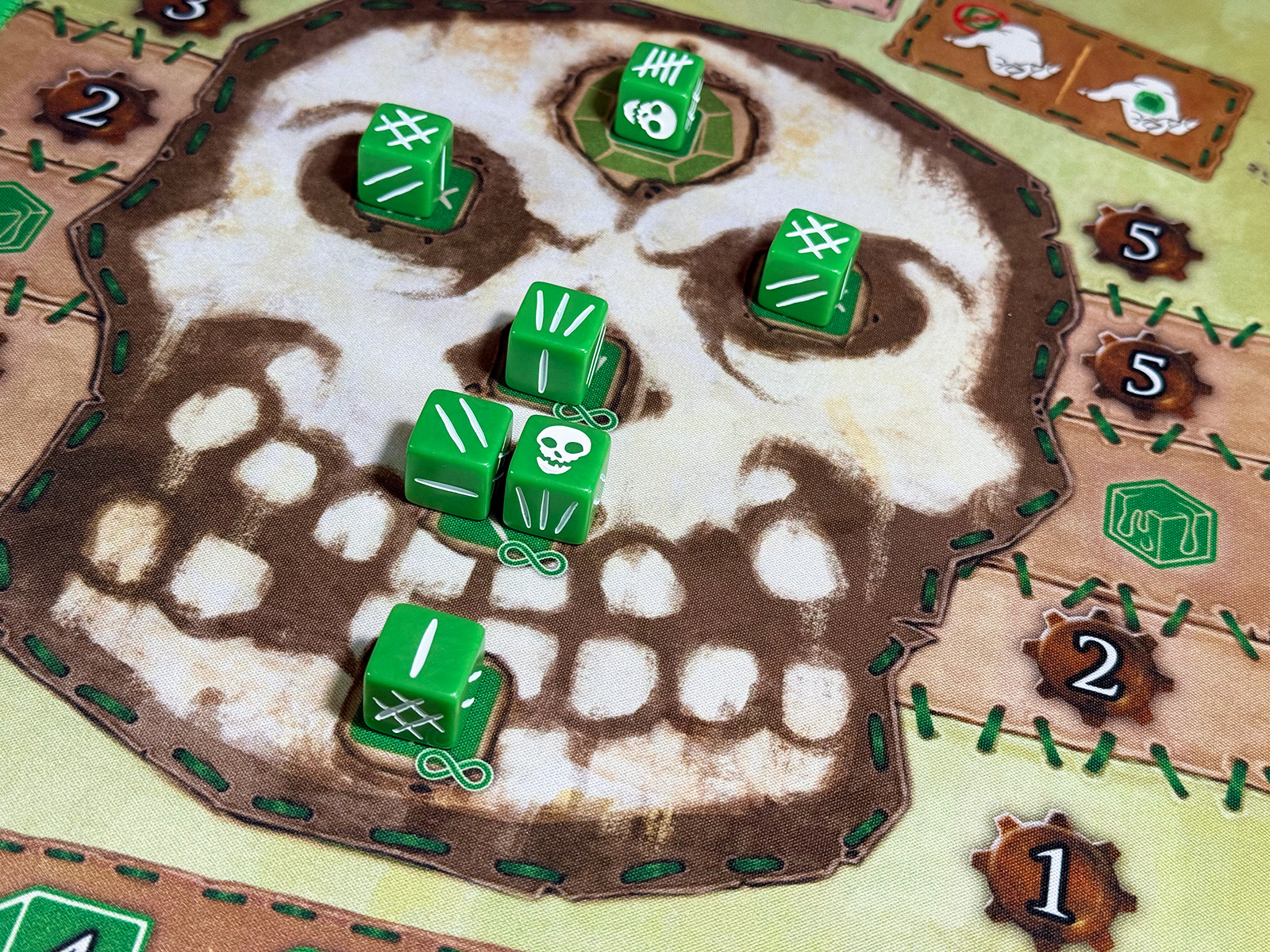
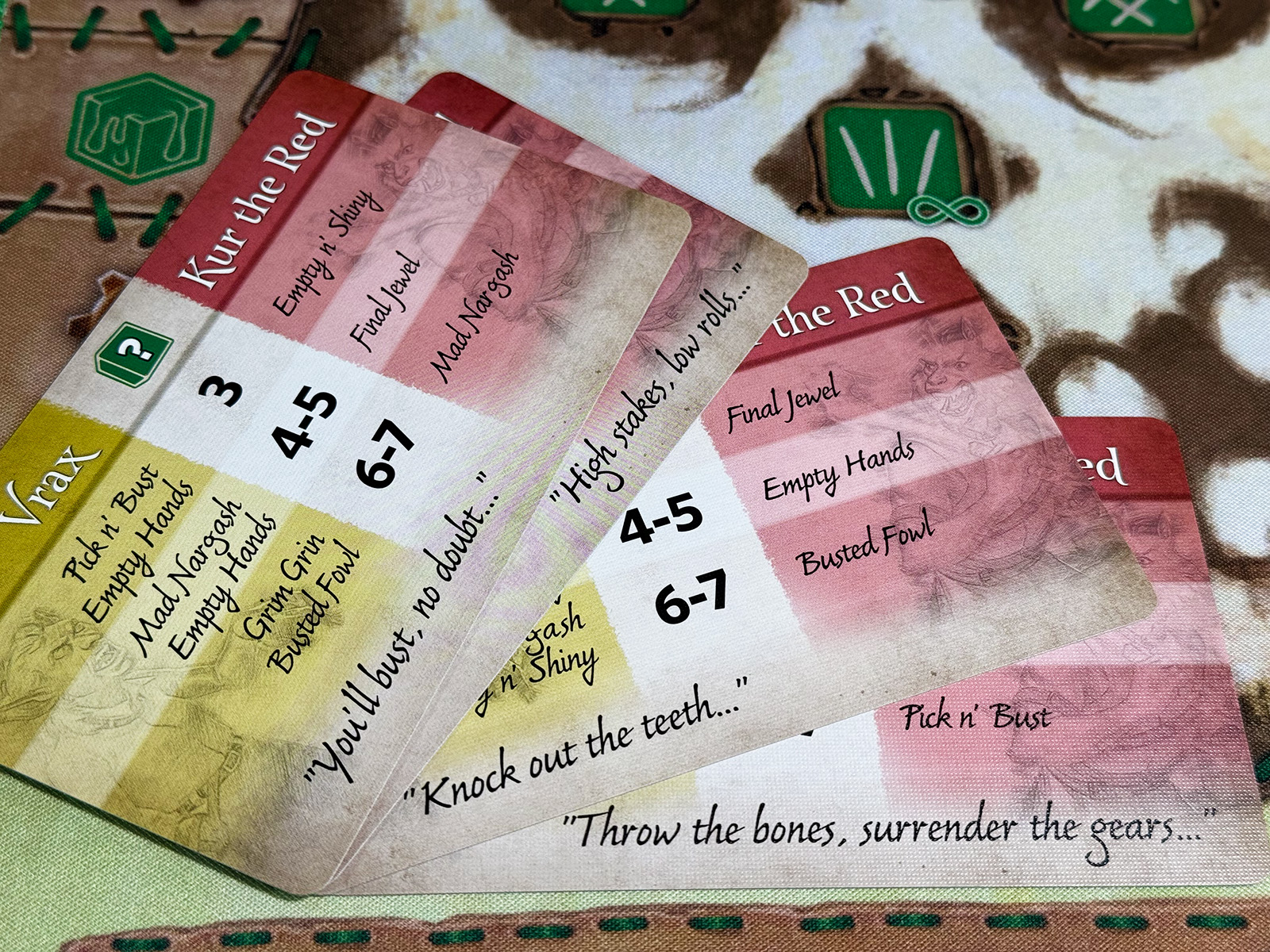
0 Comments